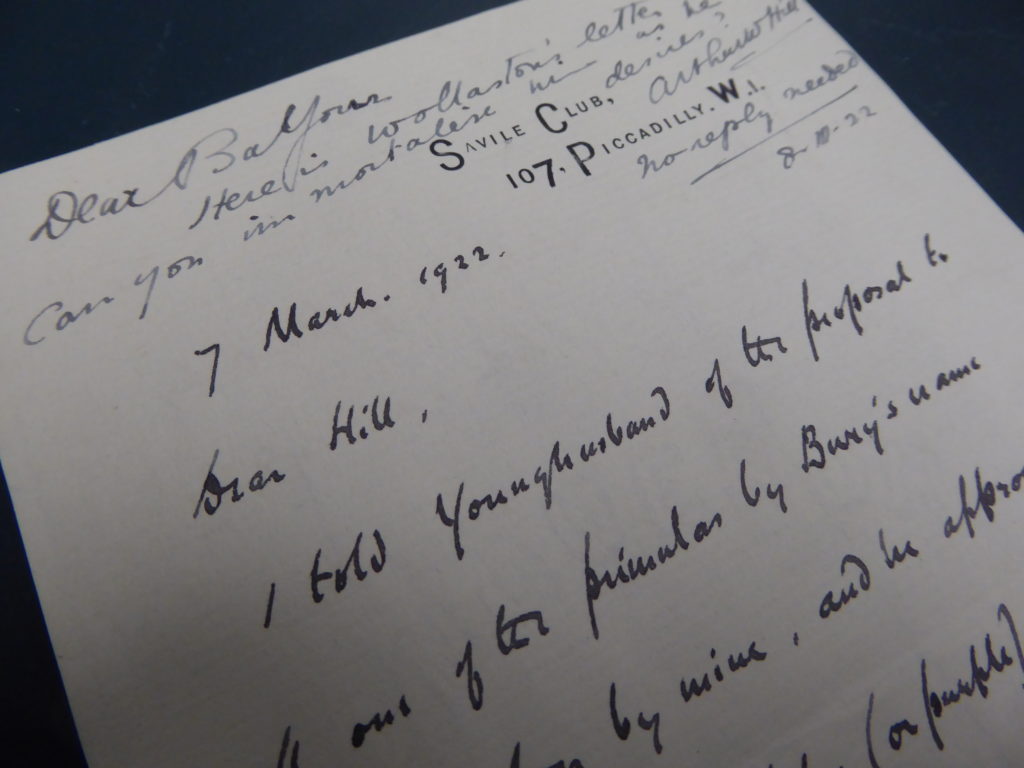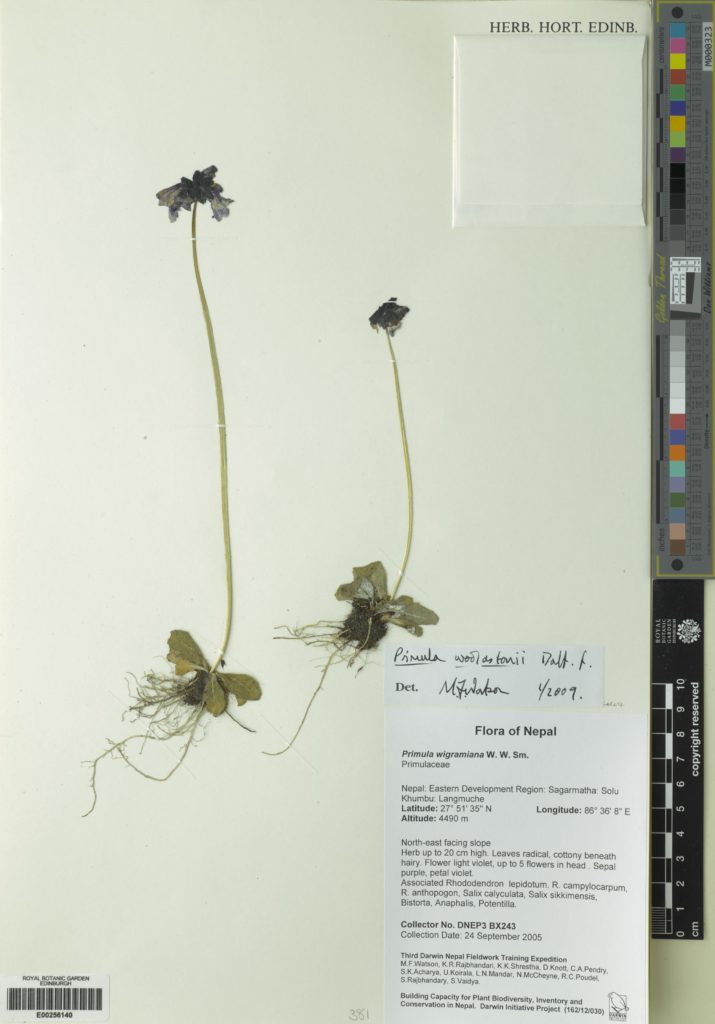
In Wade Davis’ account of the ‘Mallory’ expeditions to Mount Everest1, there is a brief but intriguing reference to the Royal Botanic Garden Edinburgh. In a section describing how Arthur Hinks, secretary of the Mount Everest Committee, set about securing sponsorship for the 1922 Mount Everest expedition, Davis notes (p 157):
“He made arrangements for the sale of botanical and zoological specimens to the Natural History Museum and obliged the Royal Horticultural Society and the Royal Botanic Garden Edinburgh, as well as private individuals, to bid for the rights to the first seeds, whether they arrived viable or not.”
This triggered a quick search of the Royal Botanic Garden Edinburgh collections, to see if there was any documentation of plants or payment for plant material arriving at RBGE from the expedition. No record of plant material was found, but Henry Noltie recovered a related letter in the RBGE archives in the correspondence collection of Sir Isaac Bayley Balfour (1853-1922, Regius Keeper at RBGE from 1888-1922).
The letter, originally sent on 7 March 1922, is from Everest expedition climber and naturalist Alexander ‘Sandy’ Wollaston (1875-1930). Referring to plant material collected on the British Reconnaissance Expedition to Mount Everest the year before, Wollaston mentioned a proposal for two of the new Primula species they collected to be named after himself and fellow expedition member and botanist Charles Howard-Bury (1881-1963), an idea which was approved by Mount Everest Committee Chairman, Sir Francis Younghusband (1863-1942). The letter was originally sent to the new Director of Kew, Arthur Hill (1875-1941), and forwarded on to Balfour, shortly before his retirement.
Dear Balfour,
Here is Wollaston’s letter. Can you immortalise him as he desires? Arthur W. Hill. No reply needed, 8.iii.22
Savile Club,
107, Piccadilly, W.1
7 March, 1922
Dear Hill,
I told Younghusband of the proposal to call one of the primulas by Bury’s name and the other by mine, and he approved. If the beautiful blue (or purple) one with large bells, silvery inside, is one of the two new ones, I hope Sir I.B.B. will give my name to that. It is such a heavenly flower and I should like to be related to it.
Yours ever,
A.F.R. Wollaston
[P.S.] I have told Edward Arnold that they shall have the complete list of plants by the end of this week. I hope I am safe in saying this – they are in such a deuce of a hurry,
A.F.R.W.

Wollaston got his wish, as Balfour named the species he indicted as Primula wollastonii and another was named Primula buryana. Pam Eveleigh gives further details in her excellent blog account.
There are numerous sheets of both species in the Herbarium at RBGE, including those from the current Flora of Nepal project.

Conventions for naming plants are now changing and there is an increasing move away from naming plants after western plant collectors, and instead for the names to better reflect the people, culture and geography of where the species were found. This letter, sent 100 years ago, is a small footnote to the history of the 1920s Everest expeditions and catches well the botanical naming conventions of the day.
1 Wade Davis, 2012. Into the Silence: The Great War, Mallory and the Conquest of Everest. Vintage Books: New York.
Pete Hollingsworth and Leonie Paterson
7 March 2022
Update: 03 September 2024: a folder of correspondence relating to the 1921 Everest expedition that includes plant lists has now been found in the William Wright Smith files: https://atom-2.rbge.org.uk/index.php/mount-everest-collection-3
